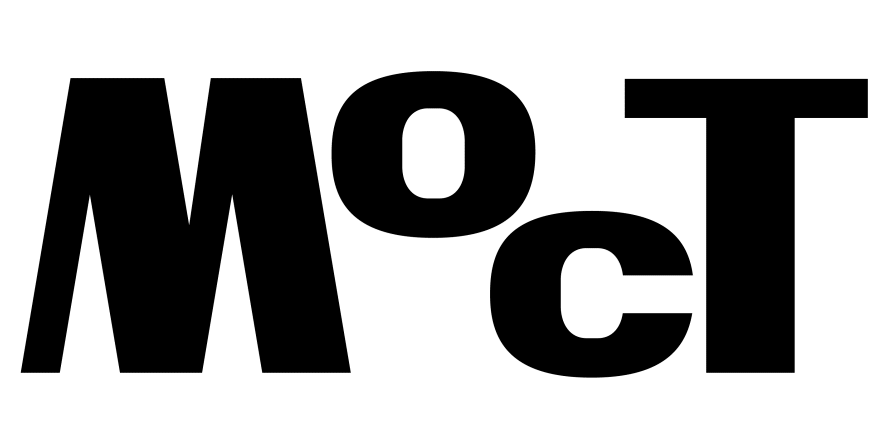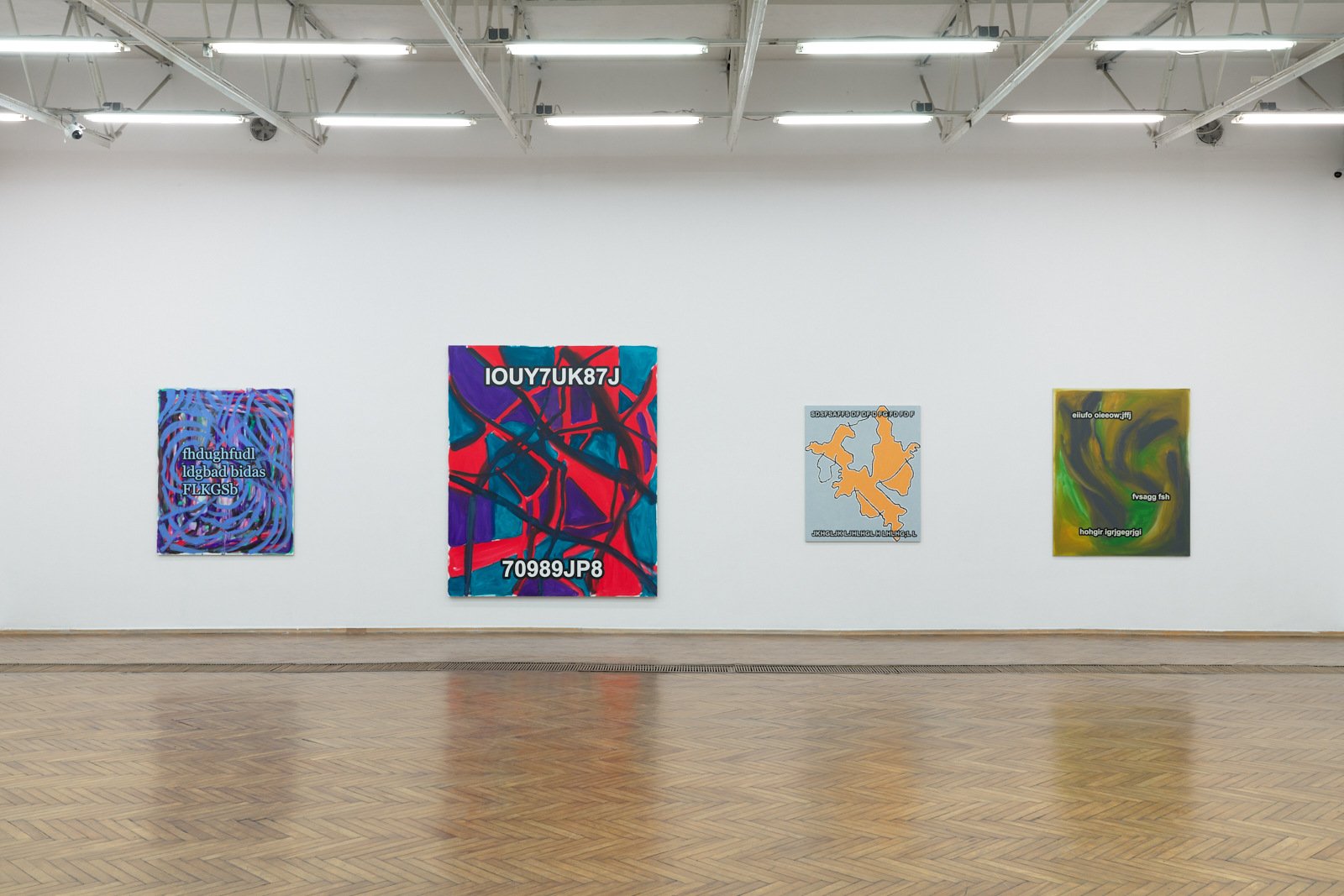Janek Owczarek
Whether we want to or not, we belong to our time and we share in its opinions, its feelings, even its delusions. (Henri Matisse, 1908)
The exhibition presents the latest paintings by Tymek Borowski, from 2023–2025. Their principle theme is scattered inscriptions, words, sentences, and also longer passages of incomprehensible text resulting from the rapid, mindless typing of a sequence of arbitrary characters on the keyboard. They may call to mind automatically generated passwords, randomly invented file names, or encrypted data. They may also visualize the rush of thoughts that happen when we can’t express ourselves clearly.
Borowski’s compositional and typographical solutions are based on common arrangements appearing in memes, instagraphics “explaining the world,” or, more broadly, the bogus online content associated with self-development, hustler slogans, and the absurd shitposts and brainrot that floods social media.
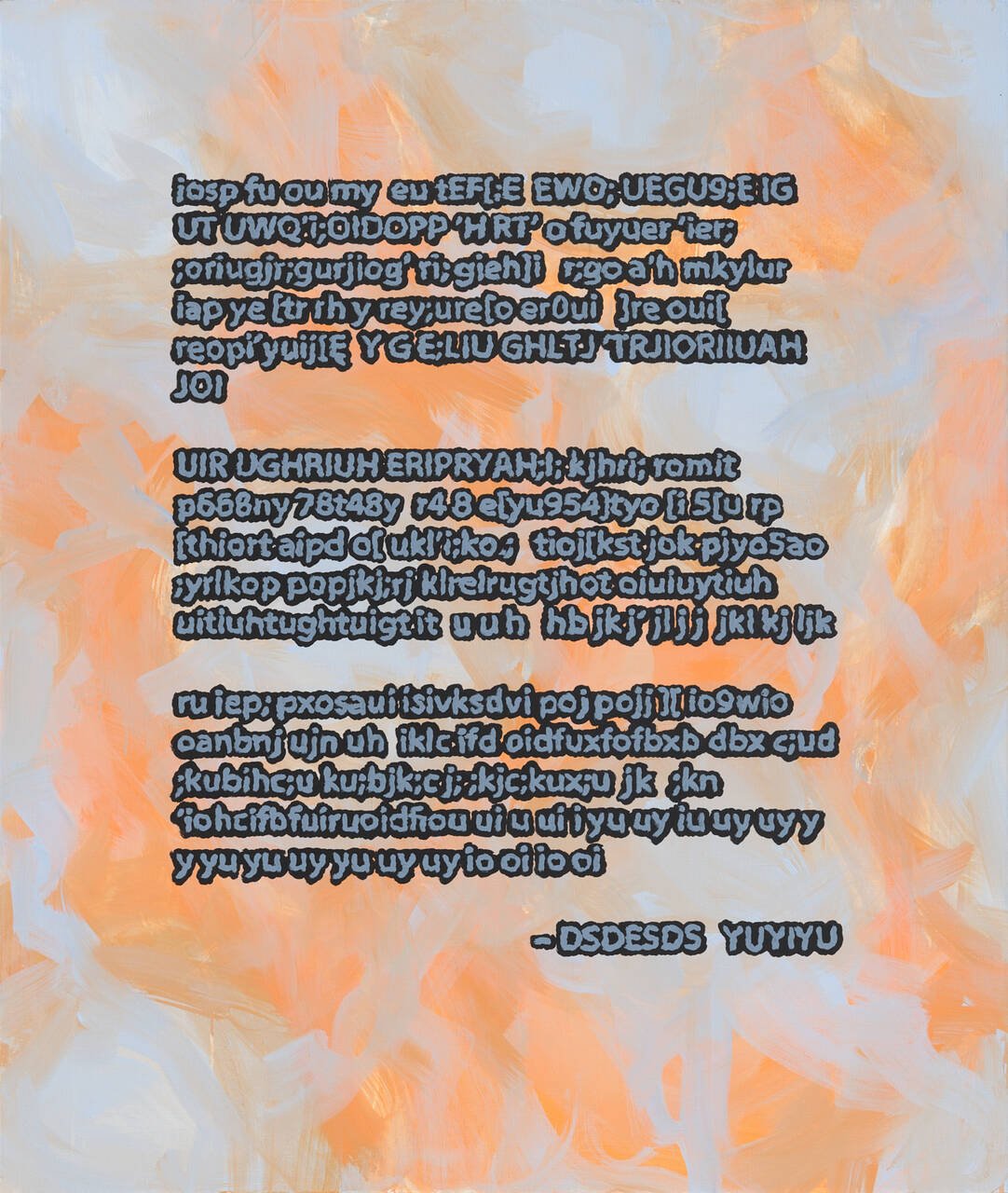
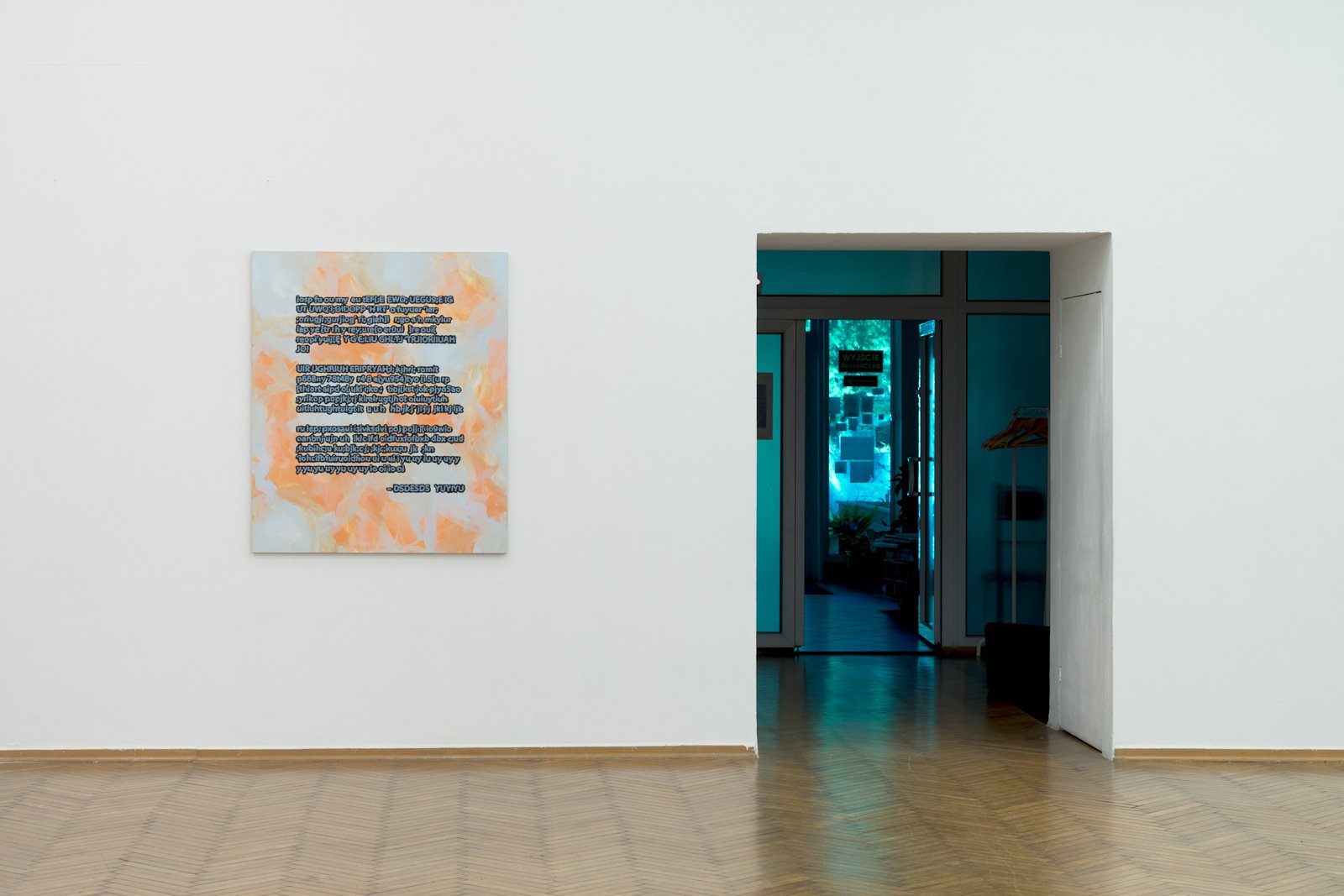


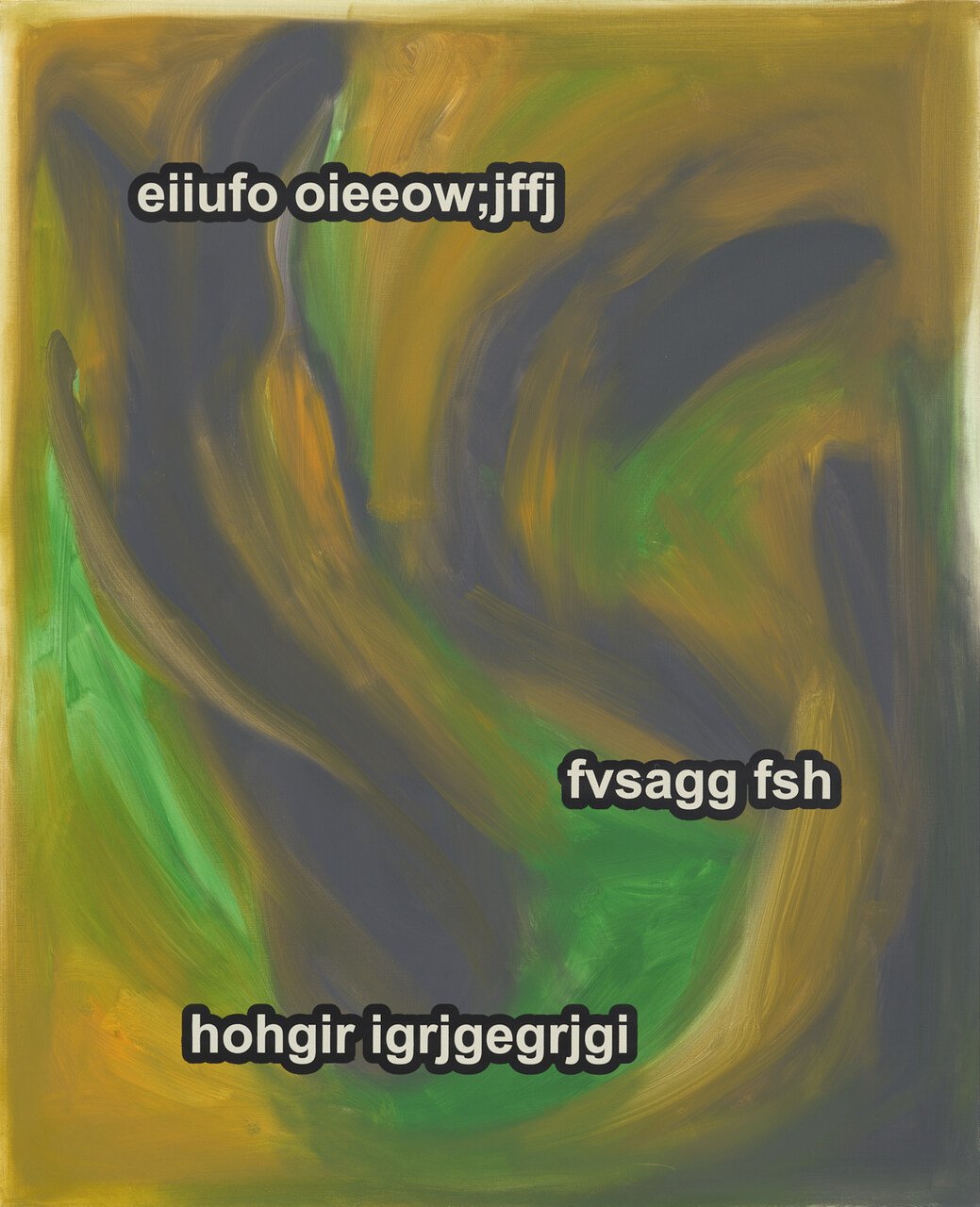
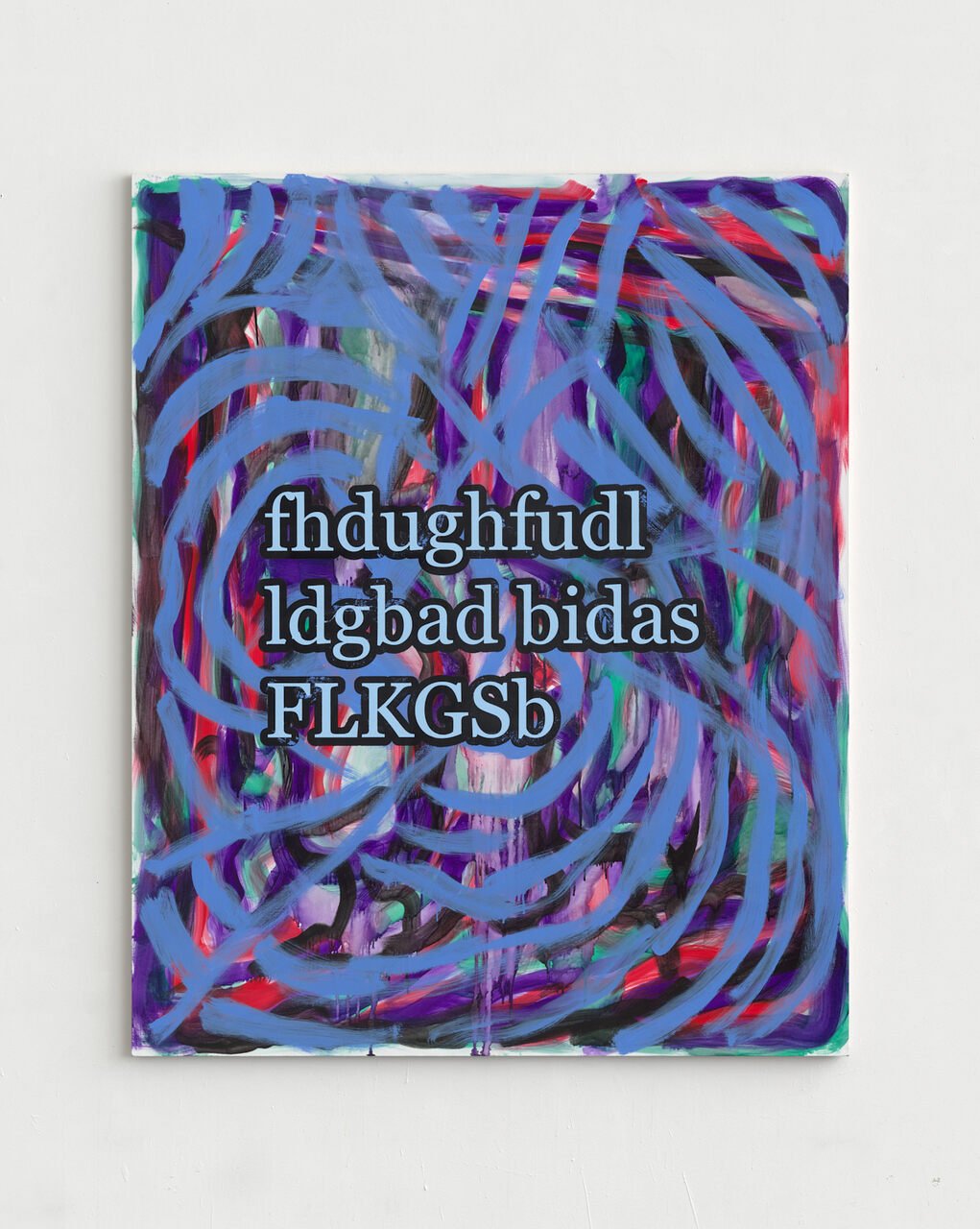
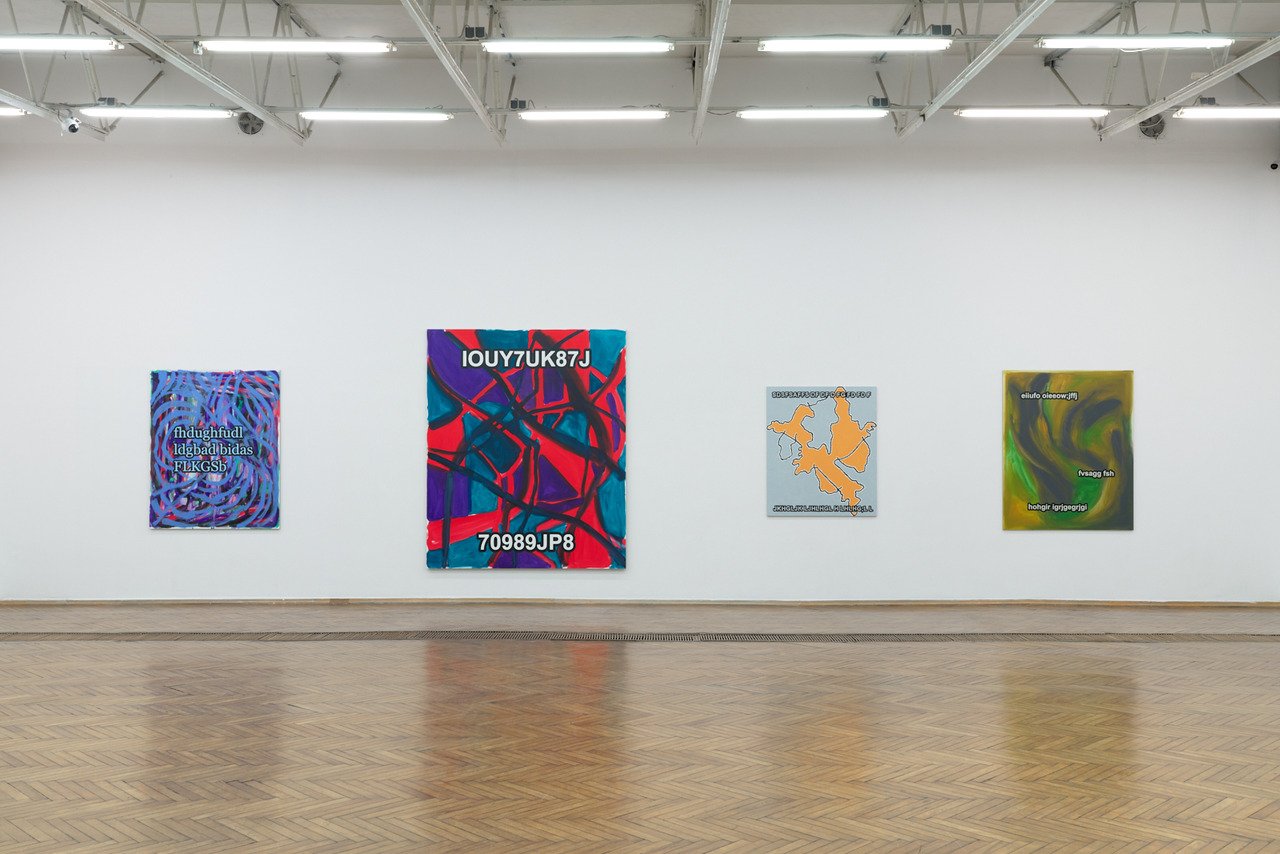
His paintings are a response to the design style dominant over the last decade known as Corporate Memphis, or more broadly as millennial design. Characteristic particularly in the content of digital platforms—flat, pastel, visually standardized—this design trend deludes us with its vision of the utopian optimism of a liberal world in which every problem can be immediately defined and presented in an empathetic and educational tone. Complex psychological, social, and political topics are presented in this aesthetic in a manner that is smooth, easily digestible, and pleasing to the eye. The hallmarks of this style are soft fonts, powdery colours, an absence of chiaroscuro, and silhouetted figures.
In place of this type of radical transparency, Borowski’s work traces the condition of contemporary consciousness, navigating a world overstimulated by data, algorithms, and AI-generated content. This arises from an excess of chaotic, useless content, defining a state of mental overload and overstimulation from dopamine-driven, passive browsing of empty images, reels, or ridiculous memes. Instead of the user-friendly interfaces and legible content characteristic of Borowski’s art ten years ago, he now proposes abstraction disrupted by an enigmatic, expressive text. If we seek a taxonomy of Borowski’s paintings, it would have to fall somewhere between spam and Stoic mottos, internet slop and lofty poetry carved in marble.
Rejecting literal messages as well as a direct accent on the authorial presence in the work of art, Borowski hyperbolizes the painterly gesture—and painterliness in general. He accosts and overwhelms the viewers’ eyes, making it hard to focus on or grasp the individual fragments of the composition. He employs aggressive juxtapositions of glaring or contaminated colours, sticky and fluid forms, and the expressive behaviour of the paint. Some of the works demonstratively repeat apparently spontaneous shapes or constitute blatant remakes of other works. This is raw abstraction. It evokes images of neural networks, quasi-mystical symbols, the upholstery patterns from Polish trains and the otherwise compromised aesthetics of the previous century. In the dynamics of their impact, Borowski’s latest painted works may be compared with the frenetic early work of Ryan Trecartin or Jon Rafman. Matisse referred to this as “the aesthetic of blinding.”
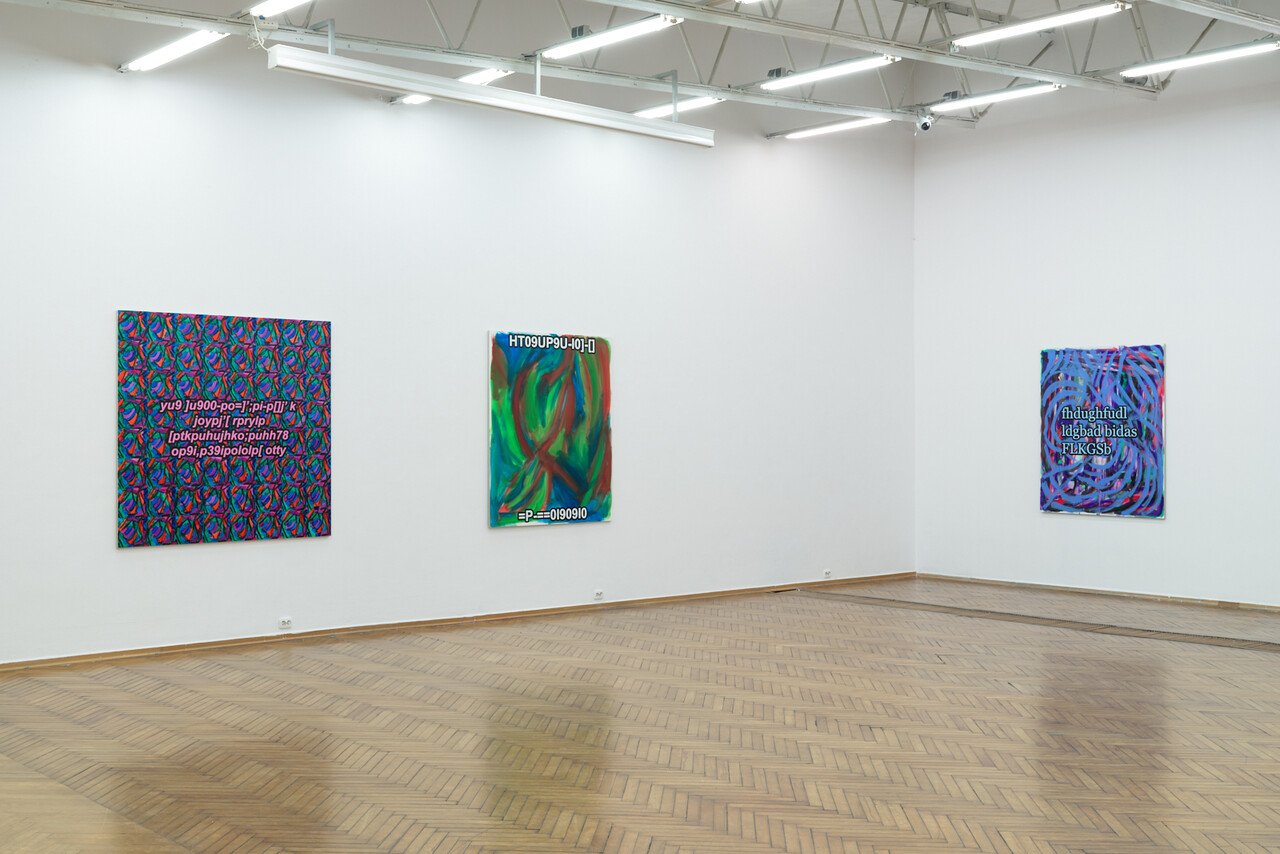
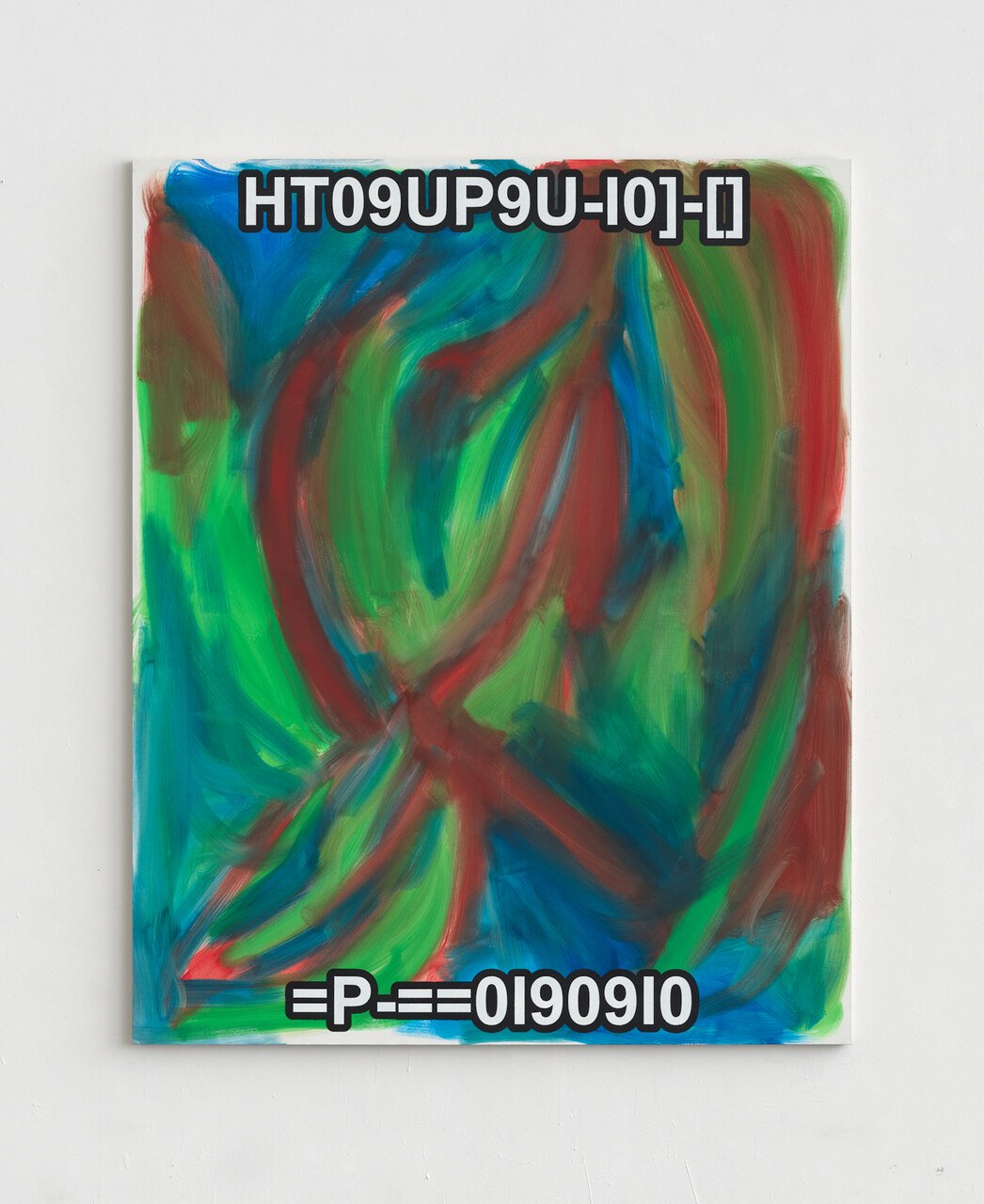
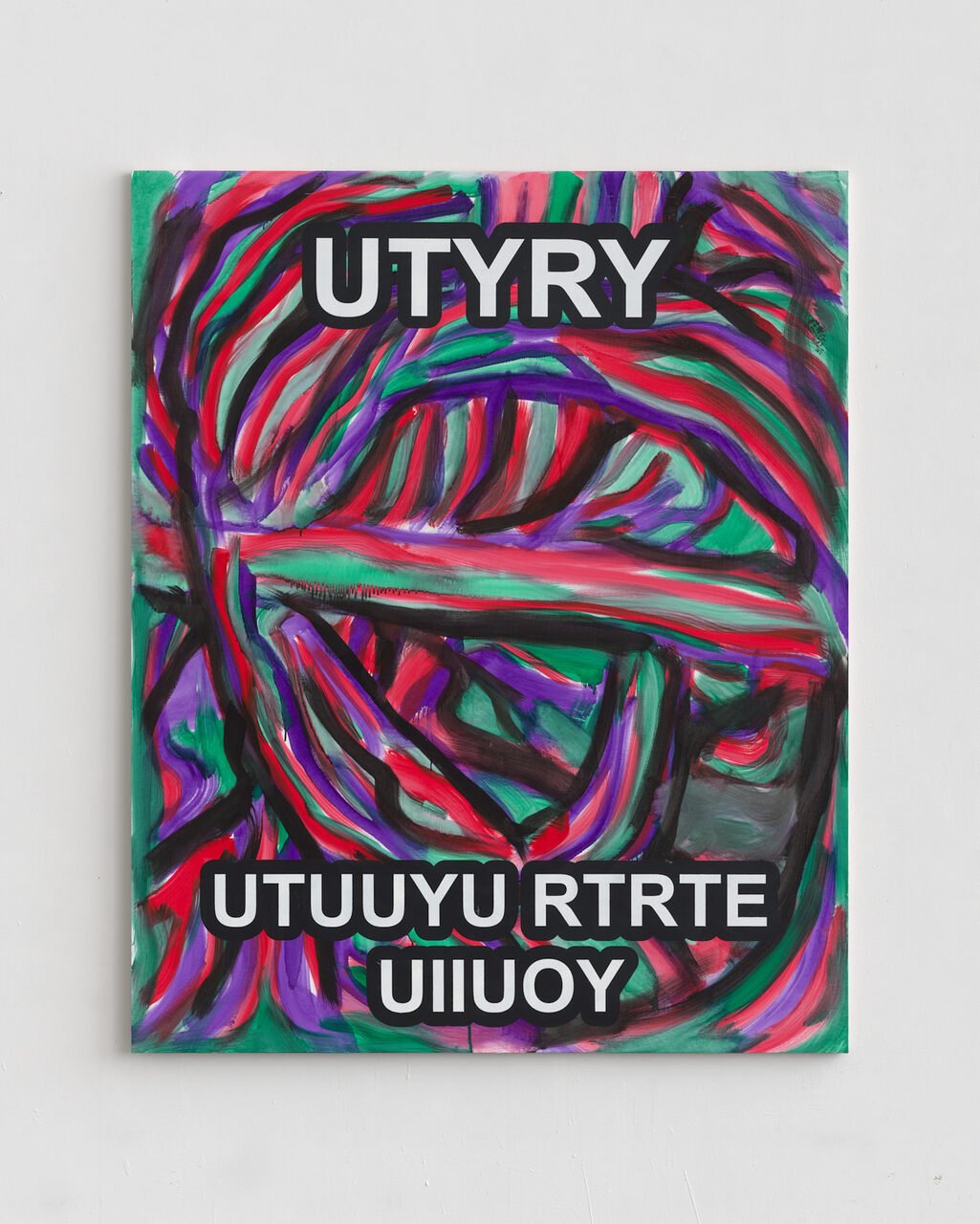
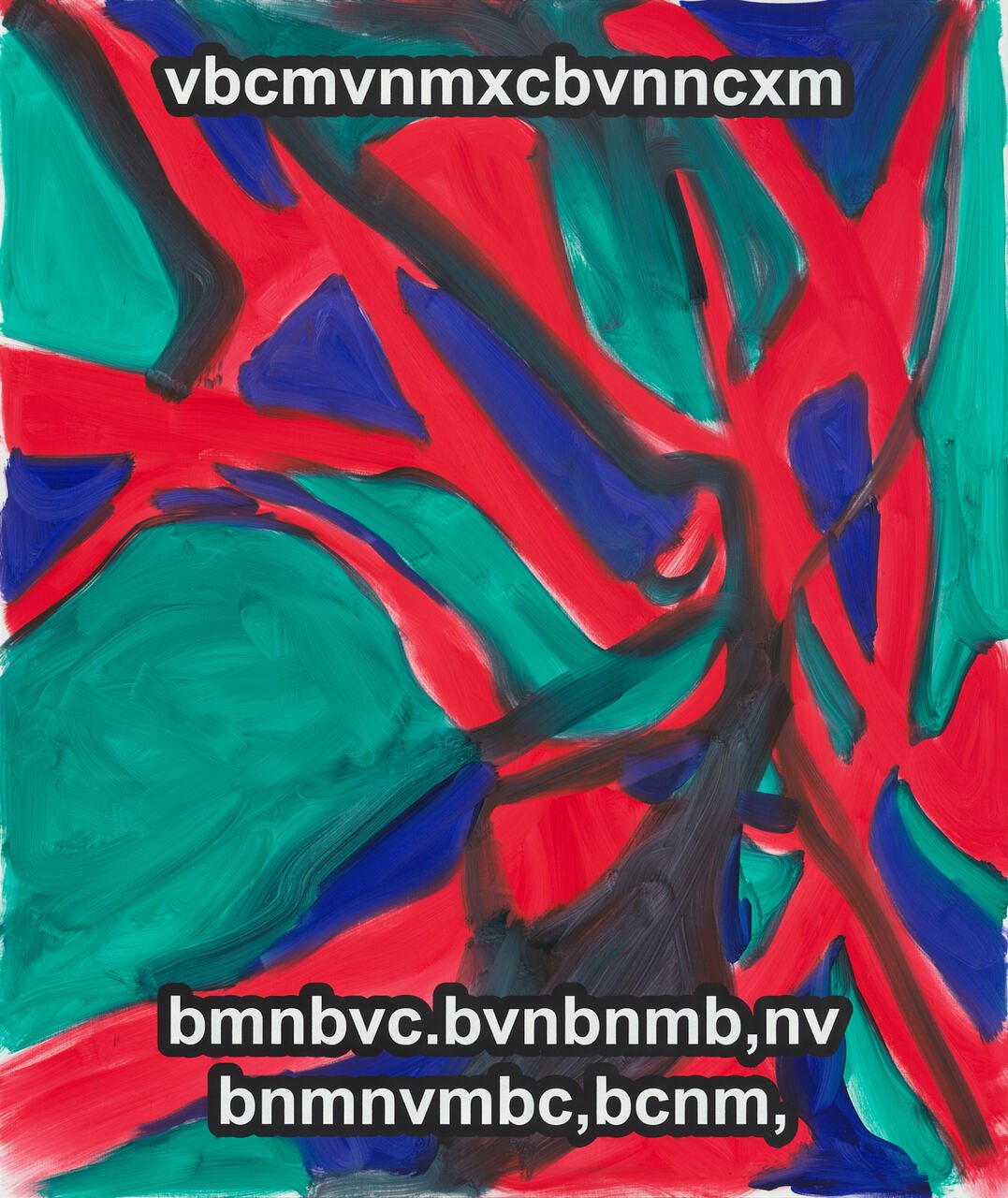
This is not the first time Borowski has resorted to the idiom of abstraction, but in the past he employed it primarily in the context of standalone works stressing the digital roots of contemporary aesthetic experience or self-referential statements ironically commenting on the mechanisms of art. Now his approach is decidedly more complex. In line with the diagnosis of the American art historian David Joselit, Borowski realizes that painting today relies less and less on its own mimetic power of representing reality. Like any other image, it cannot be read in isolation and always constitutes part of a broader system of references. Borowski’s works blur the apparent opposition between the digital and the painterly gesture. They are both informational images and painted objects. This ambivalence is reinforced, for example, by leaving the edges of the canvas unpainted or resorting to diverse methods of producing inscriptions—sometimes mechanical, sometimes painstakingly elaborate.
The inscriptions are a major part of Borowski’s new works. Again, this is a technique he has used before. But while previously they were used in a more traditional format, as an aspect of communication in the classic sense, in these new works there is a departure from the literal. Borowski’s words and sentences function beyond meaning. They don’t operate logically or even phonetically, only visually, almost like an extreme version of the non-rational language “Zaum” invented by Russian formalists in the early 20th century. For Borowski, text functions not as a separate conveyor of content, drifting in some space apart from painting. Rather, these are abstract, even haptic forms that allusively and simultaneously refer to empty internet words and lofty quotations.
So what do Tymek Borowski’s paintings communicate to us? Are they jokes or serious statements? Calm confessions, or perhaps an expressive venting of frustration? The question of sincerity or irony in his paintings is beside the point. Both confessionalism and cynical distance have recently proved to be strategies leading nowhere. Borowski’s paintings transcend this dichotomy. The chaotic strings of letters are placeholders—generic fragments ready to be filled with communication, content, message—where through cracks we may grasp the Janus-faced truth: that what is wise or foolish, sophisticated or naïve, subjective or structural, is purely a matter of perspective. Only this inconsistency becomes transgressive—especially at a time when our sense of self and attention are eviscerated by exposure to cheap, algorithmically generated content, and by the pressure for non-negotiable and exclusively correct narratives.
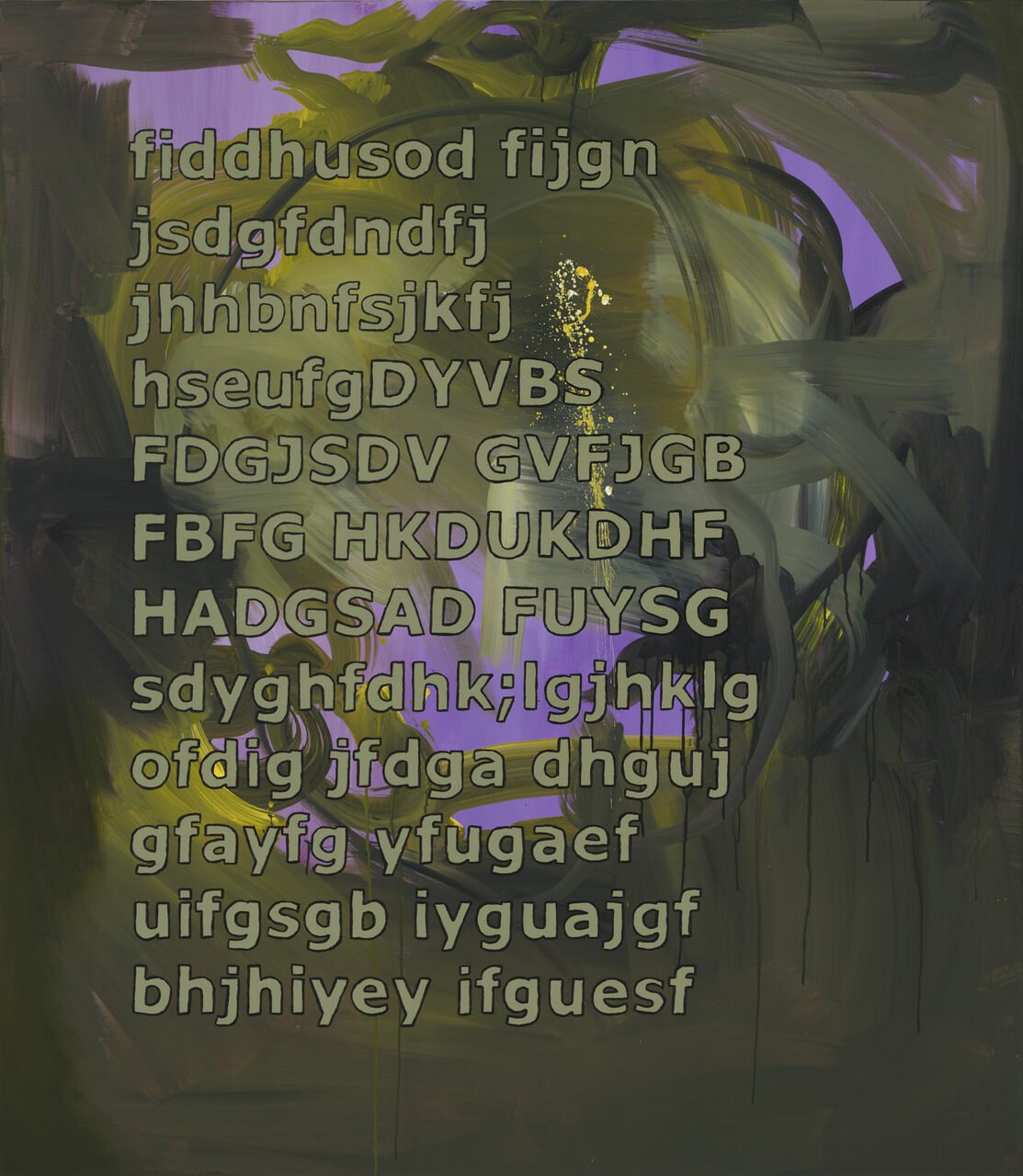
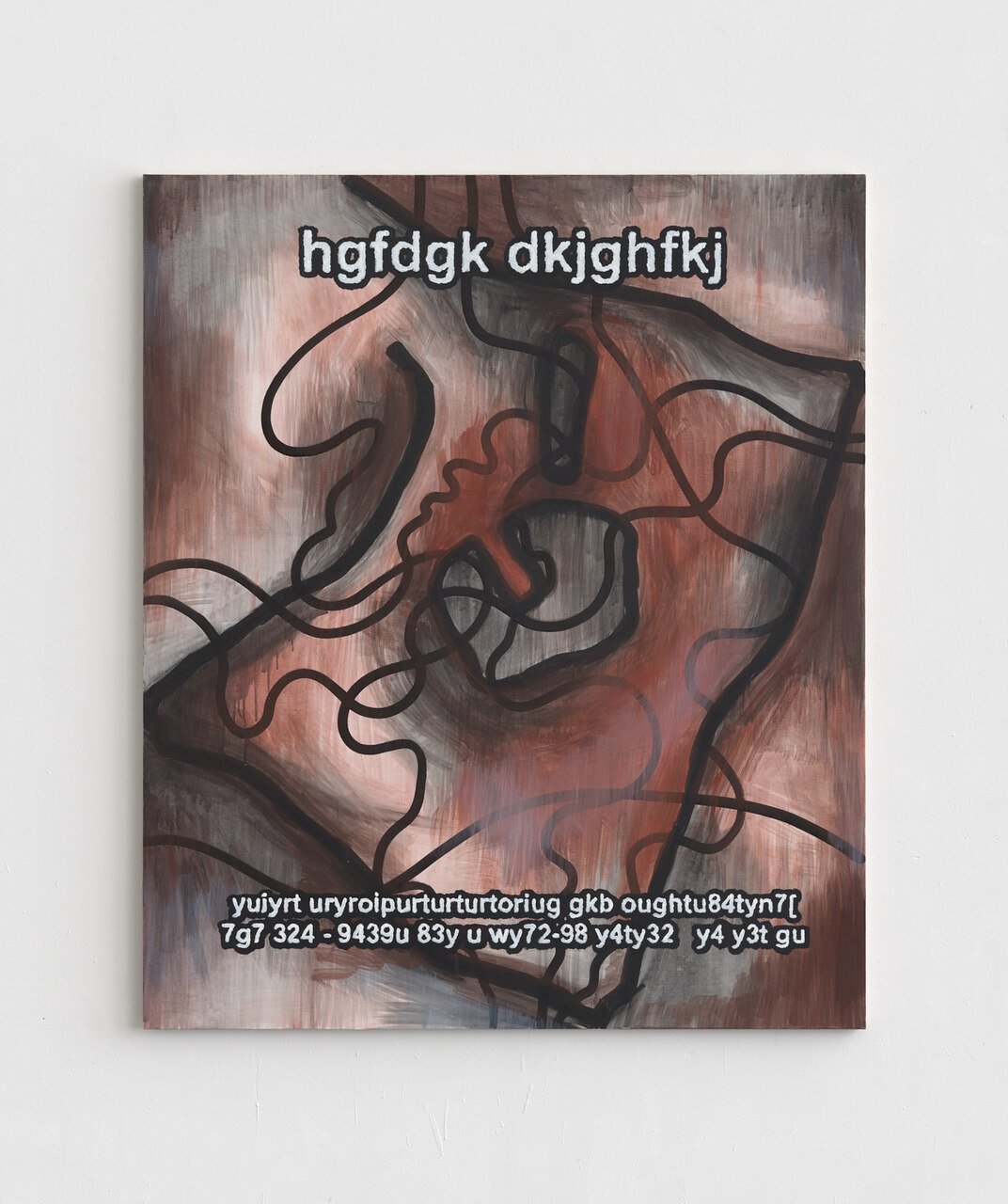
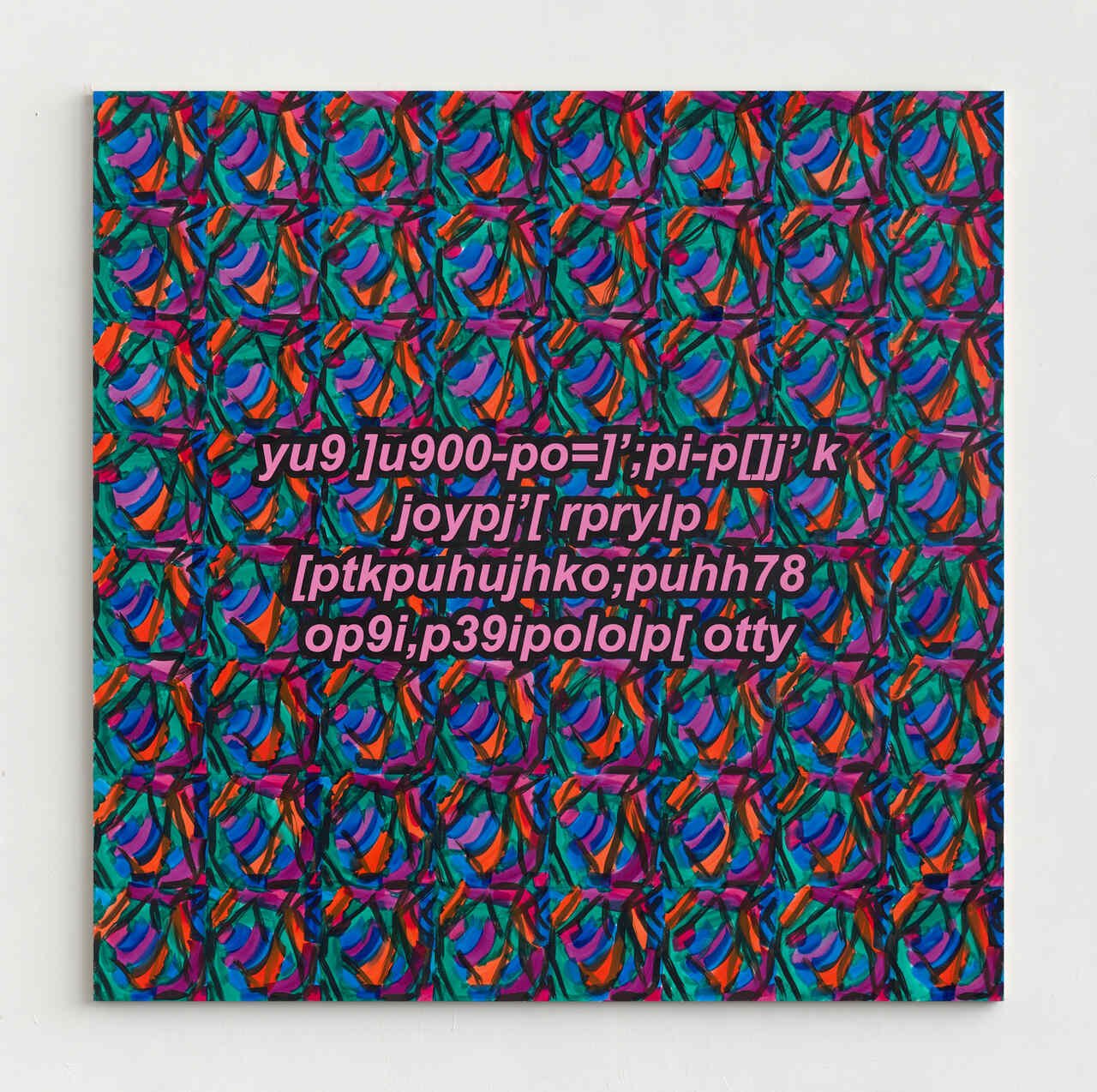
Artist: Tymek Borowski
Curated by: Janek Owczarek
Exhibition Title: Placeholders
Venue: BWA Zielona Góra
Place (Country/Location): Zielona Góra, Poland
Dates: 25.04—25.05.2025
Photos: Photos by Tymek Borowski
